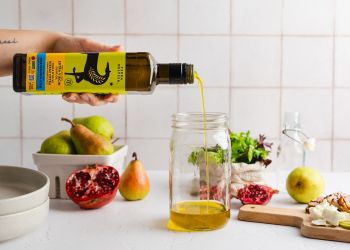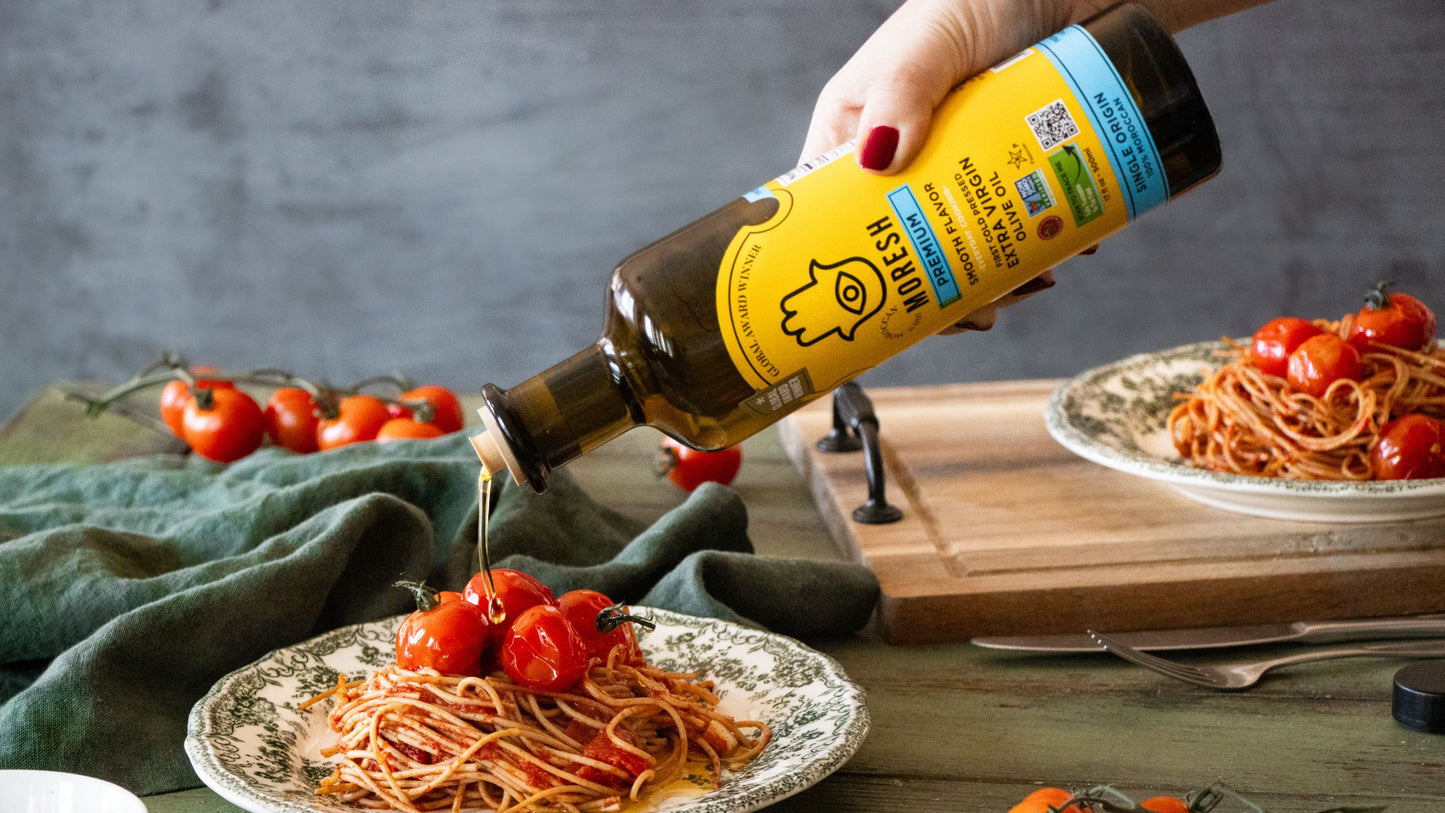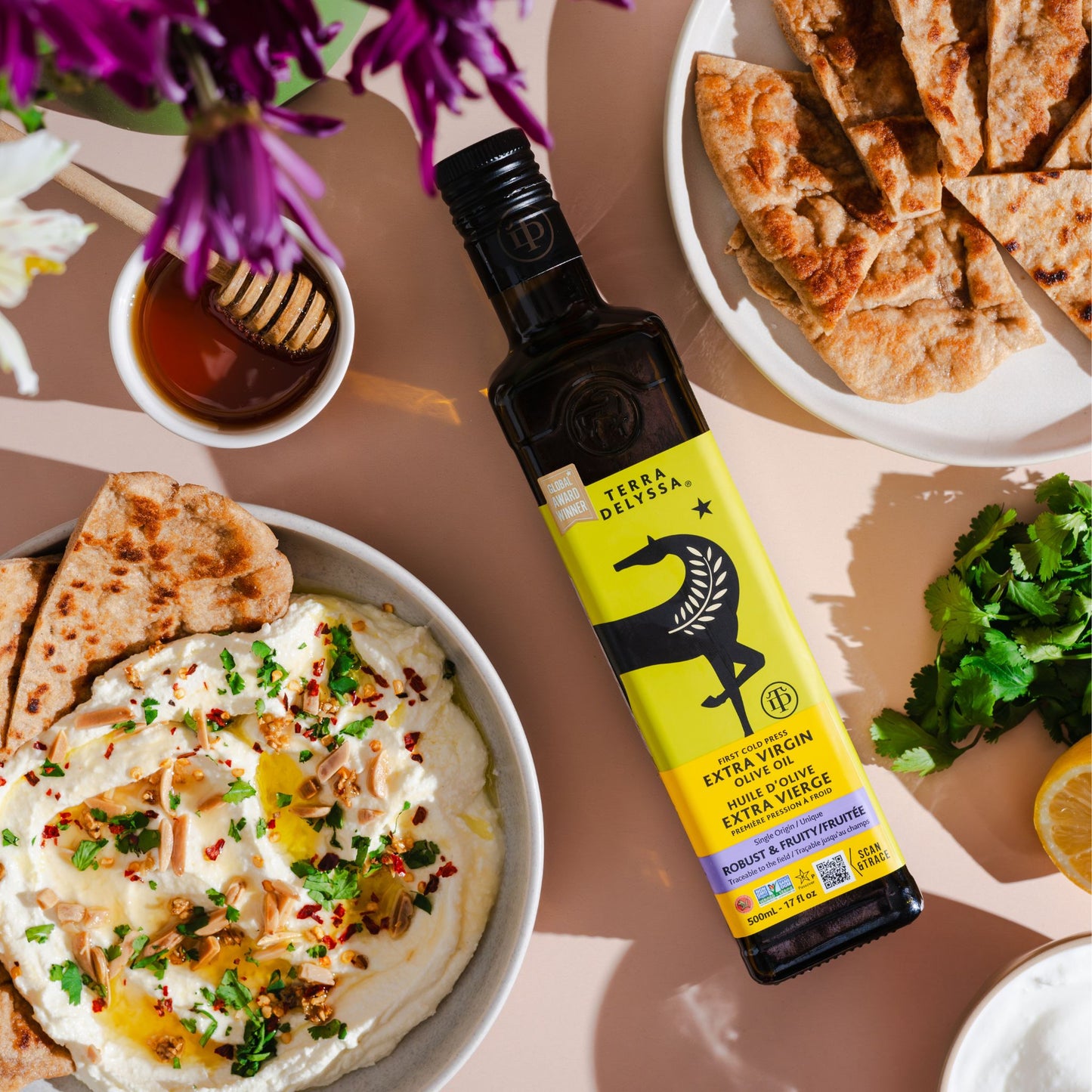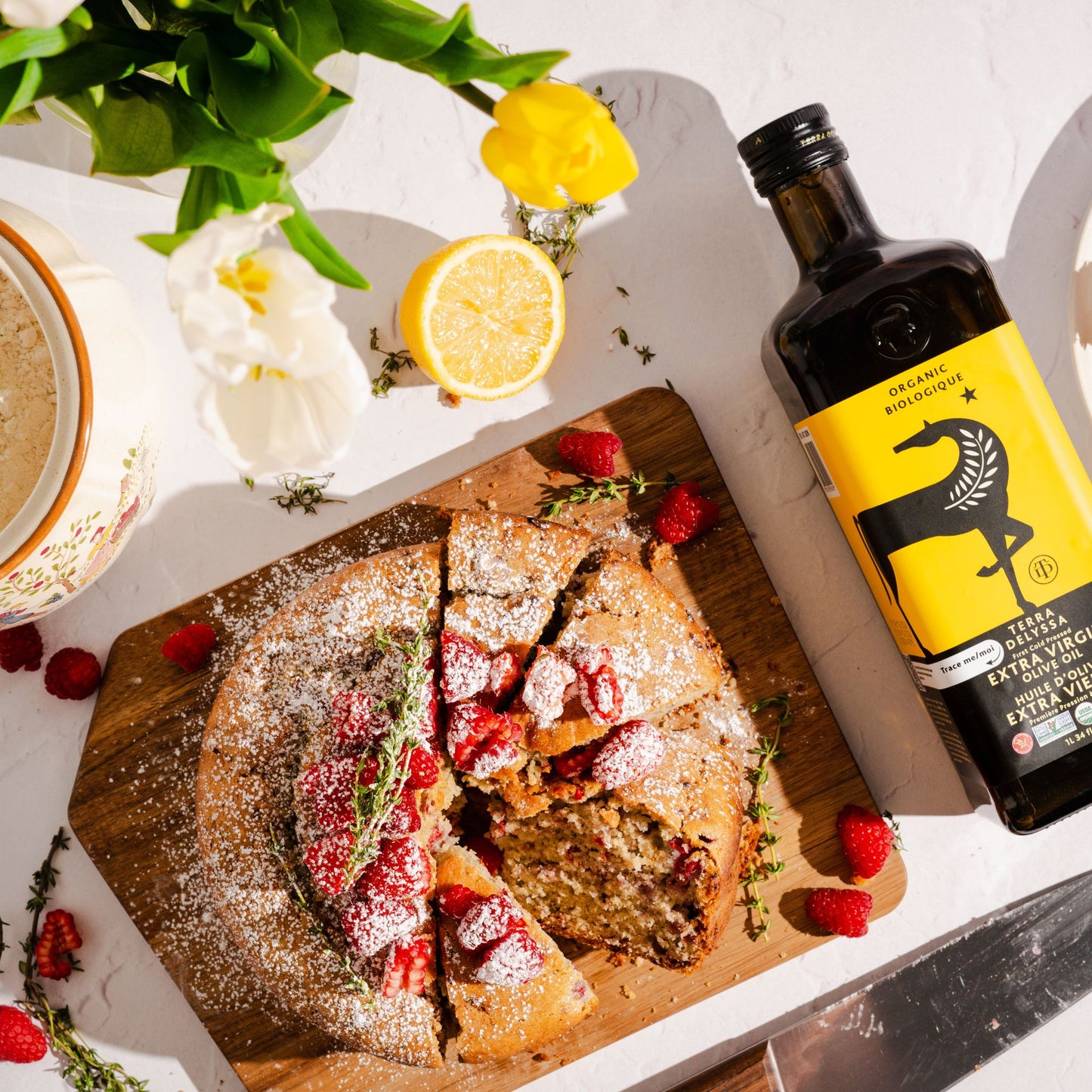
As we were reading questions from our customers about cooking with Terra Delyssa Extra Virgin Olive Oil and smoke points of olive oils, memories of the olive harvest, and how good it felt to be out in nature.
In countries with olive agriculture, like the country I grew up in, olive oil is not only a part of the culture, but also is still produced, packaged, and consumed the same way it’s been generation after another.
Olive Harvest is an exciting time. Families gather to handpick the olives all day long and go straight to the mill by sunset, they then wait patiently until their turn comes around before crushing their harvest into olive oil which they share back home with friends & neighbors.
Around that time, family gatherings would be all about how much was harvested. Food is typically prepared with that newly harvested olive oil.
With most conversations revolving around harvest and olive oil, there is one topic guaranteed to divide any gathering of family and friends. The question on everyone’s mind: can we cook everything with olive oil? And more specifically- how do you fry in olive Oil? My aunt who has an abundance of this precious liquid gold at her disposal, answers these questions promptly; she doesn't use anything else for cooking! Even making French fries gets done using only her farm’s harvest of extra virgin olive oil.
Consumers in the North American market have many different options when picking the cooking oil, they can buy. At a typical grocery store, it's common to find a vast assortment of vegetable oil, avocado oil, olive oil, coconut oil, and much more within the same aisle. With all the possibilities you can pick from, it can be difficult to pick the perfect oil to cook with. Labels on your bottle can also be quite confusing with mentions of smoke points and other details that are not always easy to understand.
At Terra Delyssa and CHO group, the olive farming, growing, & milling has been truly modernized and luckily, we have our quality assurance team, who are not only the experts in olive oil but have the to answer many of your questions.
We answer common questions about cooking with olive oil based on our team’s expertise backup with research performed by the International Olive Oil Council (IOC) and North American Olive Oil Association.
Is olive oil for cooking? what are the uses of olive oil in cooking
Olive oil is a fantastic kitchen staple to have. Its versatile, healthy, and unique flavor makes it a great choice for cooking various dishes. Many people don't realize that olive oil can be used for more than just salads and marinades. Although extra virgin olive oil has a lower smoke point than other grades of olive oil and vegetable oils, you still can use it for baking, roasting, and sauteing as the average cooking temperature at home is between 250 F and 375 F.
What’s the difference between olive oil, extra virgin olive oil, and pure or refined olive oil?
Olive oil, extra virgin olive oil, and pure or refined olive oil all share one commonality: they start out with olives! The olives are harvested once a year and made into olive oil without the use of chemicals. Once extracted, the olive oil is graded to determine its quality and purity. If the olive oil meets high parameters for quality, it then can be classified as extra virgin olive oil. This type of olive oil includes minimal processing such as filtration and has a stronger flavor than pure or refined olive oils. For products labeled simply as plain "olive oil," this likely indicates that it's a blend of two types of oils - Pure or Refined Olive Oil mixed with about 15-20% Extra Virgin Olive Oil for added color and taste. Our refined olive oils include Pure olive oil and extra light taste olive oil. Both are excellent choices for high-heat cooking as their smoke points are 450 F.
What’s the smoke point of olive oil
It’s important to note that when deciding which oil to use for cooking, the oil’s stability is more important than the smoke point. Olive oils are rich in oleic acid and minor compounds which make them very stable and a healthier option than other vegetable oils.
Here’s a summary of the smoke points of the different grades of olive oils
|
Olive Oil Grade |
Smoke Point ( F ) |
Smoke Point ( C ) |
|
Extra Virgin Olive Oil |
350° - 410° F |
177° C – 210° C |
|
Pure Olive Oil |
390° - 470° F |
199° C - 243° C |
|
Extra Light Olive Oil |
390° - 470° F |
199° C - 243° C |
Can you fry with olive oil?
Olive oil is a great option for many of your cooking needs, including frying. With a high smoke point and a mild flavor, it has the ability to stand up to the rigors of medium-high heat over longer-than-average cooking times. In a recent publication, the USDA lists olive oil as a recommended oil for frying.
You can easily recognize the olive oil’s naturally derived taste in your food without competing with other flavors or overpowering them. When compared to other oils, olive oil offers distinct health benefits too, such as "good" monounsaturated fatty acids that help reduce cholesterol levels and decrease the risk of heart disease. For any home cook looking to fry, olive oil is certainly an option worth considering.
What are the best oils for high-heat cooking?
When it comes to high-heat cooking, consumers think of avocado oil, coconut oil, or canola oil if they want a healthier alternative to vegetable oils. But as we discussed in our blog, olive oil is also a great choice for frying and other high-heat cooking applications.
The smoke point of olive oil is high enough for any type of cooking.
- Olive oil smoke point is up to 470° F
- Extra virgin olive oil smoke point ranges between 350 - 410° F depending on the level of filtration and quality of the oil
How do we substitute butter with olive oil?
Replacing butter with Terra Delyssa olive oil can be a great way to make homemade meals more nutritious. Olive oil is known for its ability to provide high amounts of monounsaturated fats, which help reduce bad cholesterol and promote good heart health. What's more, our olive oil’s smooth taste will complement nearly any dish, from salads to pasta dishes. When using olive oil as a butter substitute, use three parts olive oil to every four parts of butter. This will ensure your meals are still flavorful but also much healthier. The flavor may seem different at first, but once you give it a try, you'll be surprised how olive oil can update the classic recipes you know and love!



